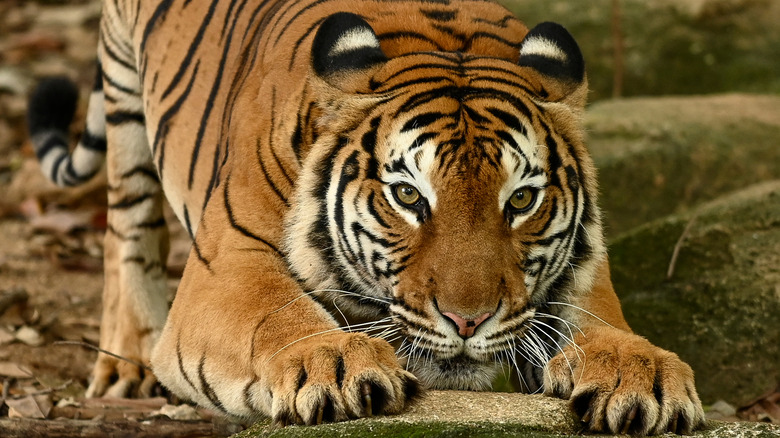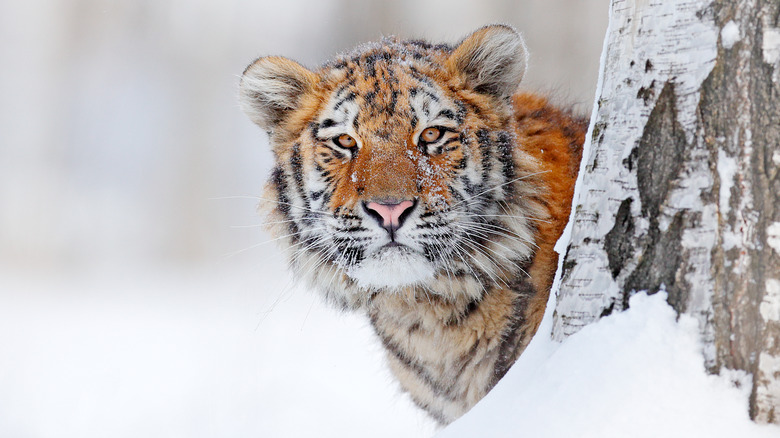The Hidden Detail About Tiger Fur You Didn't Know Was True
If the Internet has taught us anything, it's that dogs are probably the most loveable goofs in the animal kingdom. They're happy to perform (in the name of treats, naturally), they're absurdly needy, they get themselves into brilliantly ridiculous jams, and they're incredibly excited about absolutely everything. Which is often more than can be said of cats.
There's often a quiet sort of dignity about cats. A certain mystique. At least, that's what we're sometimes led to believe. They move in the shadows, they dispense affection and adoration whenever they want to (as Pet MD reports, they aren't necessarily solitary and judgmental, and dispense a lot of love in their own ways), and they tend to be sleeker and more graceful in their movements than their galumphing canine counterparts.
All of this holds true for domesticated cats' majestic relatives, big cats. In addition to the animals' striking appearance, the World Wildlife Fund reports that these fascinating, intelligent creatures may well be able to communicate in a sophisticated way, having been documented making a wide range of vocalizations which could each express different things.
As with so many brilliant and valuable things on Earth, though, people came along and ruined it all: Tigers are believed to have existed for more than two million years, but the WWF suggests that there are now fewer than 4,000 wild tigers remaining in the world. Aside from loss of their habitat, one reason for this is hunting and poaching.
Phenomenal fur, stunning skin
Tigers are just as secretive and mysterious as their smaller, domesticated counterparts. In fact, their very fur holds a secret that a lot of animal lovers may be unaware of.
Per Lesley A. Peterson's "Brief Summary of Fur Laws and Fur Production" (via Michigan State University's College of Law), tiger farms and the illegal trade in their fur are also threats to the species' survival. As always, a tiger's fur looks best on the tiger, where it should absolutely stay. Those stunning, iconic stripes have a secret, too: they're still visible on the tiger's skin itself.
National Geographic reports that the skin color of mammals is determined by melanocytes, cells inside hair follicles which produce melanin. In the case of animals with stripes or other distinctive patterns, they're not usually visible on the skin itself. Zebras, reportedly, have plain black skin. Tigers (and their fellow big cats), however, have the same striped pattern on their skin as they display in their fur. Greg Barsh of Alabama's Hudson Alpha Biotechnology Institute (via National Geographic) suggests that this is a result of the hair follicles being visible.

